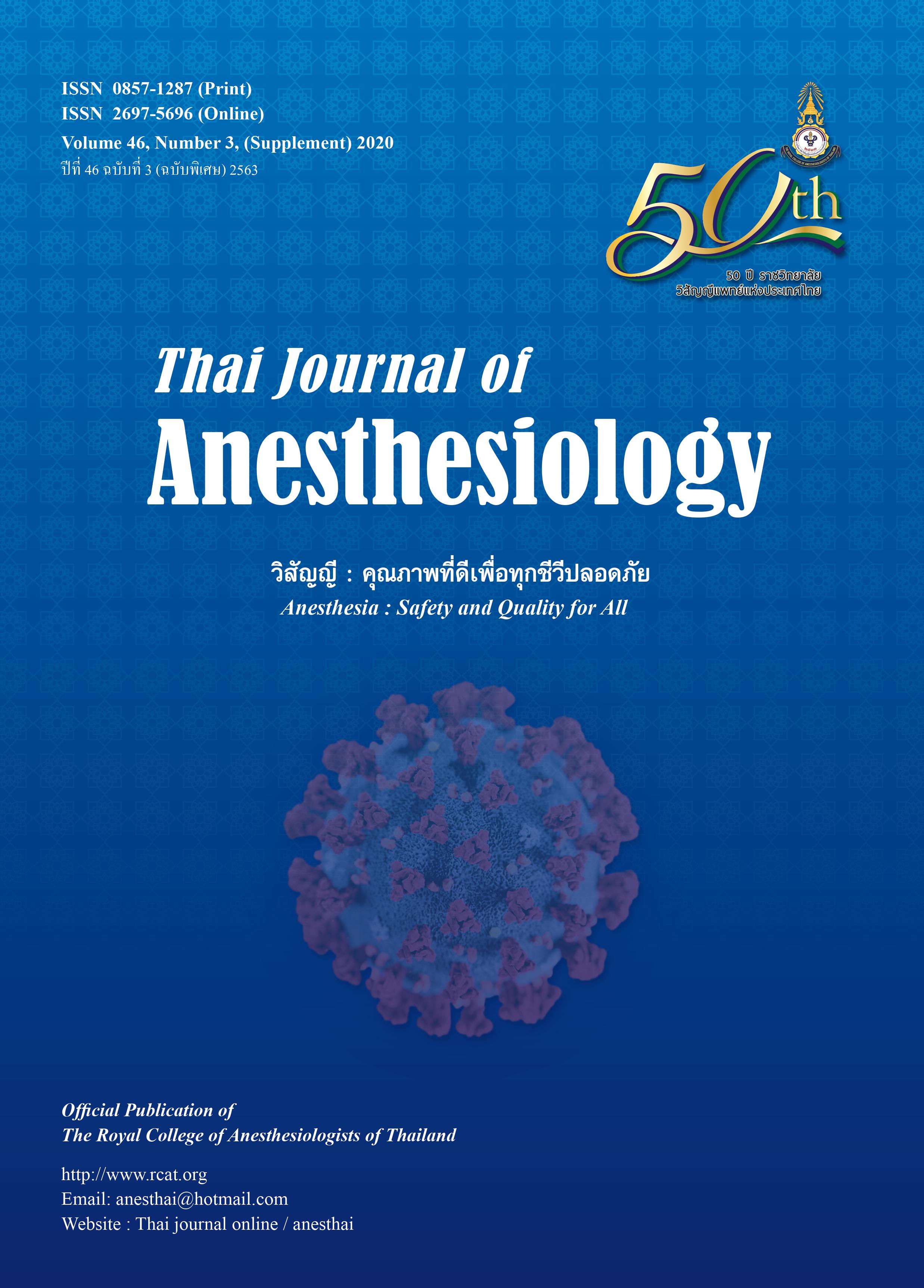หน้ากาก N95 ในสถานการณ์การระบาดของ COVID-19
Main Article Content
บทคัดย่อ
ระหว่างการระบาดของเชื้อไวรัสโคโรนา COVID-19 ซึ่ง
ติดต่อทางอากาศ (airborne) หน้ากากกรองอากาศตั้งแต่
N95 ขึ้นไป มีความจำเป็นอย่างมากต่อการป้องกันการติดเชื้อ
ไวรัสจากการปฏิบัติงานของบุคลากรทางการแพทย์ เป็น
สาเหตุให้ความต้องการหน้ากากเพิ่มมากขึ้น จนกระทั่งเกิด
ความขาดแคลนของหน้ากากกรองอากาศ N95 ซึ่งสามารถ
ทดแทนได้ด้วยหน้ากากกรองอากาศที่มีประสิทธิภาพเท่ากัน
แต่ได้รับรองด้วยมาตรฐานของประเทศต่างๆ นอกเหนือจาก
สหรัฐอเมริกา เช่น หน้ากาก KN95 FFP2 หรือ KF94 เป็นต้น
โดยหน้ากากกรองอากาศที่ใช้ทางการแพทย์และหน้ากาก
มาตรฐานทั่วไปสามารถป้องกันเชื้อแบคทีเรียและไวรัสได้
เท่ากัน การเลือกหน้ากากควรตรวจสอบการรับรองคุณภาพ
ได้จากชื่อบริษัทและตัวเลขรหัสบนหน้ากาก และหากยังมี
ความขาดแคลนหน้ากากอย่างมาก ก็สามารถนำหน้ากาก
กลับมาใช้ใหม่ได้ประมาณ 3-4 ครั้งหลังจากผ่านการฆ่าเชื้อ
ด้วยวิธีต่างๆ แล้ว
Article Details
เอกสารอ้างอิง
(COVID-19) outbreak situation 2020 [Internet]. Access on
2020/4/21. Available from: https://www.who.int/emergencies/
diseases/novel-coronavirus-2019.
2. Department of Disease Control. โรคติดเชื้อไวรัสโคโรนา 2019
(COVID-19) พ.ศ.2563 [Internet]. Access on 21/4/2020. Available
from: https://ddc.moph.go.th/viralpneumonia/index.php.
3. Zhu N, Zhang D, Wang W, et al. A novel coronavirus from
patients with pneumonia in China, 2019. N Engl J Med
2020;382:727-33.
4. Guan W-j, Ni Z-y, Hu Y, et al. Clinical characteristics of
coronavirus disease 2019 in China. N Engl J Med 2020. DOI:
10.1056/NEJMoa2002032
5. Cook TM. Personal protective equipment during the
COVID-19 pandemic–a narrative review. Anaesthesia 2020;
DOI 10.1111:anae.15071.
6. Brosseau L, Ann RB. NIOSH Science Blog: Centers for
Disease Control and Prevention 2009/10/14. [Internet].
Access on 2020/4/21. Available from: https://blogs.cdc.gov/
niosh-science-blog/2009/10/14/n95/?fbclid=IwAR046I515Y
EcDAfNgtkDC1R0obD7AxUc6n2U224c4sfWFmYqrKa
UMTADxdM.
7. Rosenstock L. NIOSH guide to the selection and use of
particulate respirators: Centers of Disease Control land
Prevention 1996/1 [Internet]. Access on 2020/4/21 . Available
from: https://www.cdc.gov/niosh/docs/96-101/default.html.
8. D’Alessandro MM, Cichowicz JK. NIOSH Science Blog:
Ceters for Disease Control and Prevention. [Internet]. Access on
2020/4/21. Available from: https://blogs.cdc.gov/nioshscience-
blog/2020/03/16/n95-preparedness/?fbclid=IwAR3
L4n0rELqh1rDOx3eLEpbDS3_tw_PXBxKecsTiMCE4sxKaAx
YdPmBprqY.
9. NIOSH-Approved particulate filtering facepiece respirators:
National Institute for Occupational Safety and Health [Internet].
Access on 2020/4/9. Available from: https://www.cdc.gov/
niosh/npptl/topics/respirators/disp_part/default.html.
10. Brosseau LM, Shaffer R. NIOSH Science Blog: Centers for
Disease and Prevention [Internet]. Access on 2014/4/2.
Available from: https://blogs.cdc.gov/niosh-science-blog/
2014/04/02/respirator-filter-testing/.
11. Mc Cullough NV, Brosseau LM, Vesley D.Collection of three
bacterial aerosols by respirator and surgical mask filters
under varying conditions of flow and relative humidity. Ann
Occup Hyg 1997;41:677-90.
12. NIOSH. How to properly put on and take off a disposable
respirator: Centers for Disease Control and Prevention
[Internet]. Access on 2014/6/6. Available from: https://www.
cdc.gov/niosh/docs/2010-133/default.html.
13. Fischer R, Morris DH, van Doremalen N, et al. Assessment
of N95 respirator decontamination and re-use for SARSCoV-
2. medRxiv 2020. DOI 10.1101/2020.04.11.20062018
14. Bergman MS, Viscusi DJ, Heimbuch BK, Wander JD, Sambol AR,
Shaffer RE. Evaluation of multiple (3-Cycle) decontamination
processing for filtering facepiece respirators. J Eng Fiber
Fabr 2010;5: 33-40.


